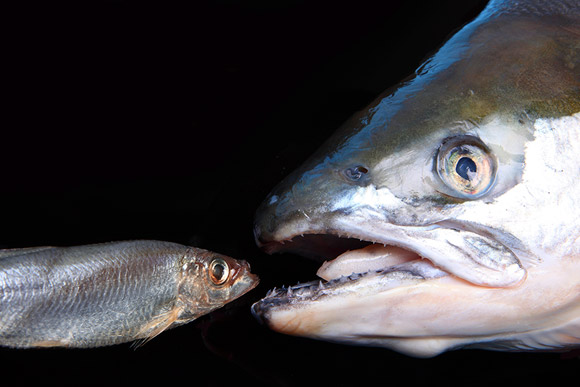Fish and Chips

Recently, an innovative materials research group at Dalhousie jumped into the ocean technology game and teamed up with ![]() VEMCO, a local company that develops unique tracking solutions for the
VEMCO, a local company that develops unique tracking solutions for the ![]() Ocean Tracking Network and researchers worldwide.
Ocean Tracking Network and researchers worldwide.
The collaboration will help scientists collect more accurate data on animal behavior, movement, physiology and the survival of animals in marine and freshwater environments.
Dr. Mary Anne White, Harry Shirreff Professor of Chemical Research (Emerita) in the Department of Chemistry, and her Thermal Properties of Materials lab usually focus on materials that can be used to develop new or improved ways to store energy.
But in a chance conversation with a VEMCO employee, Dr. White learned scientists who study the movement and migratory patterns of fish would benefit from a new kind of acoustic telemetry tag—a tracking device inserted under the skin of a fish. This tag would somehow have to emit a signal when a larger fish ate a tagged fish. That way researchers could better interpret their data knowing the information coming from that tag is associated with a different species.
“He said, ‘we have a problem that materials research might help us solve,’” recalls Dr. White of the conversation over dinner. “So, I wondered, how can my team help develop that signal?”
“We needed to make a coating for the tag that the stomach acid of another fish would dissolve — it would need to be stable and non-toxic while under the skin of the tagged fish, but unstable and still non-toxic in the stomach acid of the predator,” says Dr. White. “It’s a fascinating project, chips in fish.”
With funding from an NSERC Engage Grant, Dr. White’s team identified that a derivative of a material called chitin provided the right combination of chemical properties for the coating. A product of nature, chitin helps form tough outer skeletons found on lobsters, beetles and spiders.
The placement of the tag was an important factor in the success of this project because tags are inserted under the skin so they can continuously send out information on location, activity and physiology. Dr. White’s modified chitin material would require particular mechanical properties, too. After considerable chemical testing, the team made a coating flexible enough to prevent cracking and swelling while the fish moves about.
When the coating of the tag encounters the predator’s stomach acid it degrades and triggers the release of a small magnet that emits the signal of predation, changing the output of the tag to indicate that it’s inside of a predator.
Dr. White, Kim Miller, a postdoctoral fellow at the time, and former master’s student Ryan Fielden hold a patent with VEMCO on the successful device. Called the V5 Predation Tag and available on the company’s website, it reacts to a changing chemical environment on predation and within a matter of hours emits a signal to researchers.
This article was adapted with permission from ![]() Dalhousie University.
Dalhousie University.
Up next

Advancing Reproductive Efficiency & Stress Management in Beef Heifers
The primary goal of a cow-calf operation is to produce one calf per cow per year. However, the journey to achieving this reproductive success is fraught with challenges influenced by a variety of factors, including genetics, nutritional status, and stress, each playing a crucial role in the performance of heifers.